Zarch Qanat of Yazd, the Longest Qanat in the World
Zarch Qanat is 3500 years old and was dug in the pre-Islamic era. The Zarch Qanat is about 88 km long from Fahraj to Zarch Mountains and covers 2115 wells. This has made Zarch Qanat the longest qanat in the world.
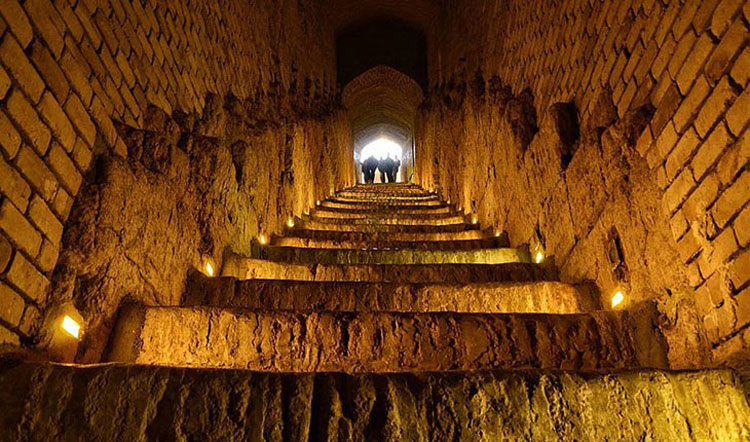
Qanats are the source of life and Zarch Qanat is not an exception. Having three salines, fresh and hot water springs at around 30 meters deep with 70 stairs, it has watered down about 10 hectares of land in the area. Although thousands of years have passed since the invention of the Qanat, it is still used in this way. People have profited from this Qanat by constructing various mills and payabs along it. Today, Qanat has a global reputation and is transported from Iran to most desert regions in the world.
The outlet of the Qanat is located in the town of Zarch and includes three underground channels named as saline water, fresh water, and Ebrahim Khavidaki. However fresh water and Ebrahim Khavidaki channels are dried and not active anymore. Nowadays, only water fellows through the saline water channel for 72 km. Although Zarch Qanat is still active, the amount of watering of the Qanat has significantly decreased due to the deep and semi-deep wells in the qanat basin.
Recently, Zarch Qanat of Yazd was registered in Iran National Monuments List with registration No. 14830
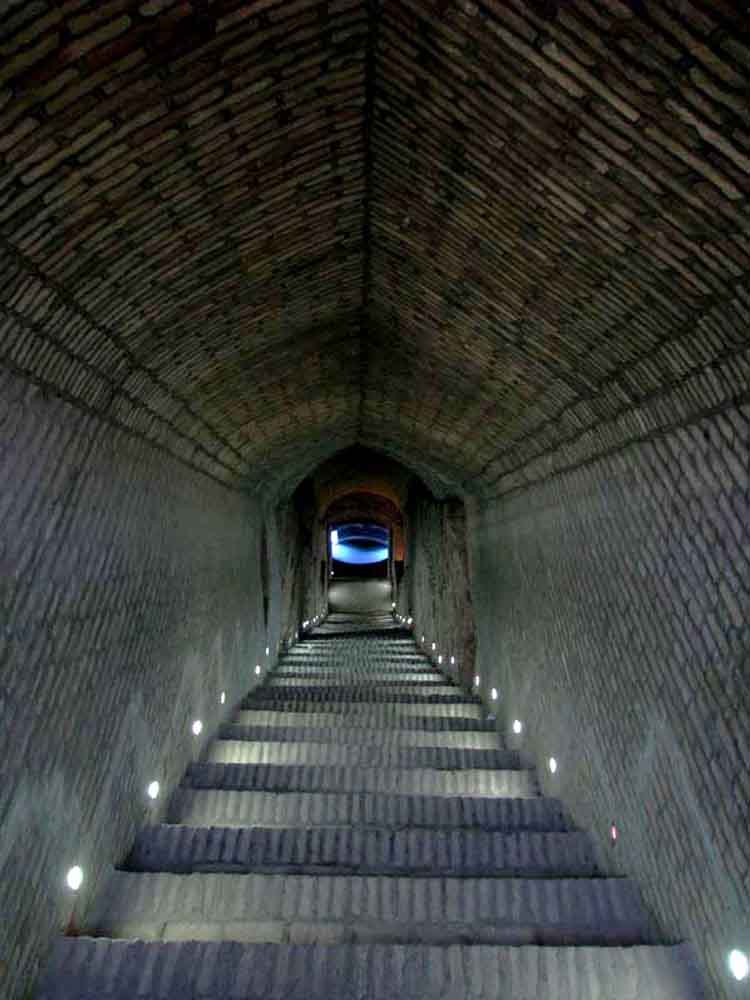
History of Qanat in Iran
Many historians consider the history of excavation of the Qanat during the Achaemenid period, and this was due to the lack of the pre-Achaemenid epigraphs. However, oral history and civilization in Iran are much older than the Achaemenid period, and basically archaeological findings prove that the civilization in eastern Iran dates back to more than five thousand years ago. Thus qanat that was a source of life for people in desert areas in Iran can be estimated to be originated from the same time, i.e. 5000 years ago.
.jpg)
Some of the wells of the Zarch Qanat are located in Jame Mosque of Yazd which shows the mosque was built over the Qanat to supply the water for the prayers. This indicates that the Qanat was dug in pre-Islamic era; i.e. before the mosque was built. The wells were used to feed the water reservoir of the mosque. The water reservoir was accessible through the Payab which is still in use.
One of the interesting features of the Zarch Qanat is that the cross section of the Qanat is a square; while, the cross section of the other Qanats are usually a circle or an oval which shows the Zoroastrianism architecture indicating that the Qanat dates back to pre-Islamic era.
For more information about Zarch Qanat of Yazd, please contact Raadina Online Support.
Online Support











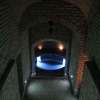
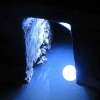
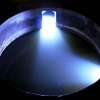
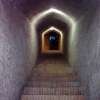


.jpg)
